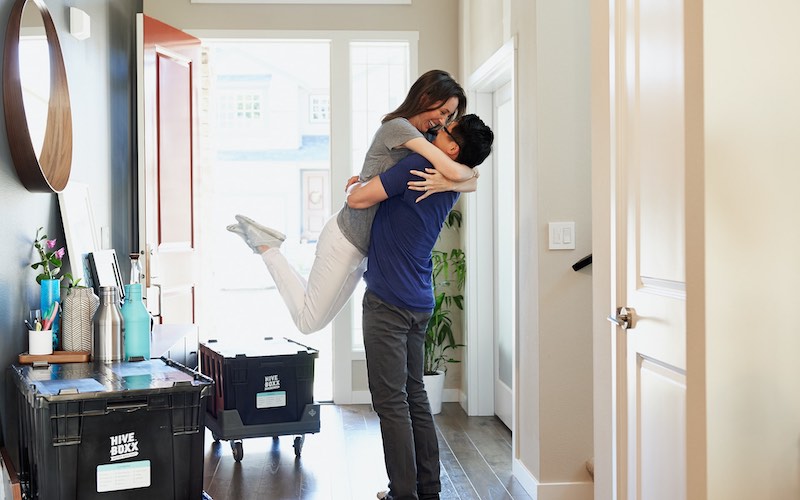It's easy to look at this as lenders gearing up for an RBA rate hike, but that's a bit simplistic.
A large part of it is due to something else - swap rates - which are in turn influenced by RBA decisions and other market factors.
Bear with me for a second, and try not to let your eyes glaze over.
What's a swap rate?
An interest rate swap is a derivative financial instrument and consists of one institution 'swapping' their wholesale variable rate to pay a fixed rate repayment with another institution.
Banks use interest rate swaps to 'hedge' or even-out their risk and minimise their exposure to one interest rate type.
Banks often base fixed home loan rates off swap rates, and there's a cost in doing these swaps.
The cost is often calculated as a 'spread' - one way of calculating it is on the difference between the fixed interest rate and the Australian Commonwealth Government bond yield.
This is called a swap-to-bond spread.
Now that the Reserve Bank has pulled out of buying government bonds, the markets have gone a bit whacky.
The cost of swaps is going up
Just like homebuyers might want the surety of a fixed rate home loan, some banks like the stability too, which explains the price of swaps going up.
As of 22 April, the closing cost of a three-year interest rate swap was 2.98% - up 84 basis points in just a month and 38 basis points in just one week.
Five-year swaps were 3.26% - 73 basis points higher in a month, and 31 in a week.
This is the premium to pay a fixed rate and receive variable interest back.
Due to the wholesale funding market going haywire, swap rates have generally increased faster than fixed-rate home loans.
Banks are making less money than before on fixed-rate home loans, especially as the repayment date on the Term Funding Facility draws closer.
How this translates into fixed and variable home loans
Major banks have pencilled in Reserve Bank cash rate increases to start in May or June - months earlier than initially anticipated.
This comes as annual inflation hit 5.1%, putting the RBA under pressure to act.
A sharp increase in swap rates is likely why there has been a sudden jump in lenders increasing fixed home loan rates.
CommBank made two rate increases in three weeks; Westpac twice in a week; ANZ twice in two weeks; NAB also increased last week.
Chad Hoy Poy, national lending manager at non-bank lender WLTH, explained some of the recent bank behaviour.
"We have seen fixed rates increase dramatically amongst lenders, whilst keeping variable rates low in an attempt to win market share," Mr Hoy Poy said.
"Generally speaking, current fixed rates have expected rate rises built in and borrowers should be aware variable rates will change over time.
"Variable rates are still around 2.00% with fixed rates over 3-4 years already reaching 4.50%."
Fixed
Fixed-rate home loans exploded in popularity through the pandemic largely due to the Reserve Bank's three-year Term Funding Facility providing in excess of $200 billion in cheap funding to banks.
Banks then passed this funding on in the form of cheap fixed-rate deals, locking homebuyers up largely between one and five years.
A few years ago, fixed rate home loans made up less than one-in-five in new mortgages written in any given month; in mid-2021 they made up nearly half.
Now CommBank has about $89 billion-worth of fixed-rate home loans expiring in 2023.
Fast forward to 2021 and 2022, and banks and lenders have hiked their fixed rates repeatedly, with some rates increasing by 200 basis points or more.
In this way, a fixed-rate home loan is essentially a bet between borrower and lender.
The borrower hopes variable rates increase sharply after they lock-in their fixed rate; the lender prices this in, and charges the borrower a premium.
And like at a casino, the house pretty much always wins - eventually. Good luck trying to beat the banks at their own game.
As seen in the chart below, fixed home loan rates have increased sharply while variable rates trended sharply down.
Variable
In the advent of a June RBA rate hike, many lenders won't hesitate to pass the rate increase on in full (and perhaps by more) to variable loan products.
Variable rates are often based off the Bank Bill Swap Rate (BBSW) and more sensitive to the RBA's cash rate target, and are shorter-term in nature.
What's on the horizon in the short term? Oh yeah, the prospect of an RBA cash rate hike.
AMP Capital's chief economist Dr Shane Oliver wants the RBA to be "aggressive" and hike the cash rate next week by 40 basis points, bringing it to 0.50%.
What does this mean for house prices?
The RBA's most recent Financial Stability Review paper highlighted that 200 basis points' increase to interest rates could cause home prices to decline by 15%.
Domain's quarterly dwelling price report notes a slight cool-off in prices over the last quarter, particularly in Canberra and Melbourne - house prices were down 0.9% and 0.7% in these cities respectively.
Mr Hoy Poy said property prices could cool off if home loan costs increase further.
"I expect property prices to stabilise and potentially dip - perhaps opening the window of opportunity for first home buyers that can service increased mortgage repayments but have delayed entering the market due to deposit requirements or perceived instability," he said.
"Home buyers looking to get into the market shouldn’t be discouraged. When applying for a home loan, lenders have a servicing buffer to help reduce risk in regards to rate increases and see if you have enough of a buffer to handle it without extra financial stress.
"Borrowers should always ensure they can service increased loan repayments over the coming years."
That buffer is often the mortgage rate plus the regulator-defined buffer rate of 3%.
Advertisement
Buying a home or looking to refinance? The table below features home loans with some of the lowest interest rates on the market for owner occupiers.
| Lender | Home Loan | Interest Rate | Comparison Rate* | Monthly Repayment | Repayment type | Rate Type | Offset | Redraw | Ongoing Fees | Upfront Fees | Max LVR | Lump Sum Repayment | Additional Repayments | Split Loan Option | Tags | Row Tags | Features | Link | Compare | Promoted Product | Disclosure |
|---|---|---|---|---|---|---|---|---|---|---|---|---|---|---|---|---|---|---|---|---|---|
5.79% p.a. | 5.83% p.a. | $2,931 | Principal & Interest | Variable | $0 | $530 | 90% |
| Promoted | Disclosure | |||||||||||
5.74% p.a. | 5.65% p.a. | $2,915 | Principal & Interest | Variable | $0 | $0 | 80% |
| Promoted | Disclosure | |||||||||||
5.84% p.a. | 6.08% p.a. | $2,947 | Principal & Interest | Variable | $250 | $250 | 60% |
| Promoted | Disclosure |
Photo by Anastasia Shuraeva on Pexels

Ready, Set, Buy!
Learn everything you need to know about buying property – from choosing the right property and home loan, to the purchasing process, tips to save money and more!
With bonus Q&A sheet and Crossword!






 Denise Raward
Denise Raward


 Rachel Horan
Rachel Horan


